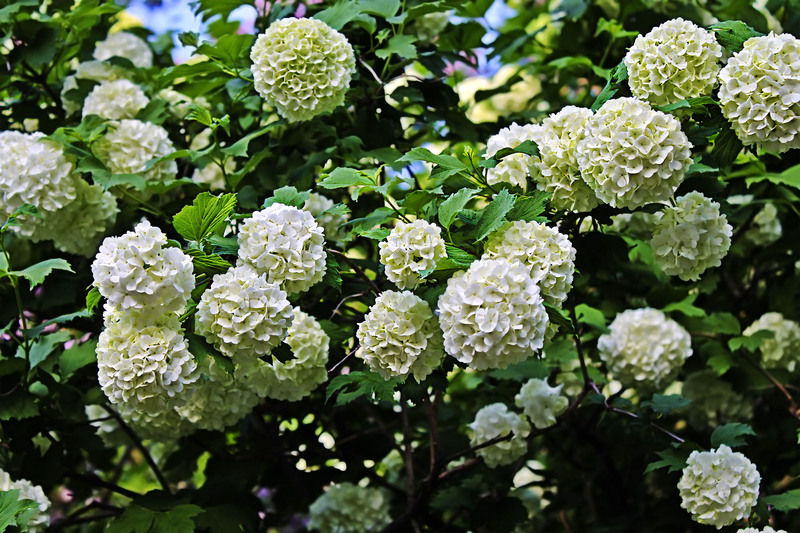Innovative Weed Control: 3 Tips for Success
Posted on 14/06/2025
Innovative Weed Control: 3 Tips for Success
Weeds have long been the bane of gardeners, landscapers, and farmers worldwide. While traditional methods of weed management - such as hand-pulling, hoeing, and chemical herbicides - are still commonly used, the need for more environmentally-friendly, sustainable, and effective alternatives is greater than ever. In this comprehensive guide, we unveil three innovative weed control tips that will help you achieve outstanding results. Whether you're a passionate home gardener, a professional landscaper, or a sustainability-minded farmer, these methods offer results that are efficient, eco-conscious, and align with modern best practices in weed suppression.
Why Embrace Modern Weed Control Techniques?
Weed management is challenging and requires a nuanced approach. Weeds compete with desirable plants for nutrients, light, and water, potentially lowering yields in crops and diminishing the beauty of your landscape. Traditionally, herbicides have provided a quick fix, but their extensive use can harm soil health, contaminate water, and pose risks to beneficial insects and wildlife. Innovative weed control techniques not only aim to efficiently suppress weeds but also conserve soil quality and preserve ecological balance.
- Environmental Benefits: Minimize chemical runoff and soil degradation
- Economic Efficiency: Reduce costs related to repeated herbicide application
- Long-Term Results: Foster soil and plant health for years to come
Tip 1: Harness the Power of Mulching for Weed Suppression
Organic and Innovative Mulching Strategies
When discussing innovative weed management, mulching remains a front-runner thanks to its dual benefits: not only does it block sunlight from reaching weeds, but it also enriches the soil with organic matter, helping your plants flourish. Yet there's more to mulching than simply covering soil - innovative approaches can amplify its weed-controlling potential.
- Organic mulches: Bark chips, straw, compost, and shredded leaves suffocate weeds while improving soil structure.
- Living mulches: Consider planting low-growing groundcovers, such as clover or creeping thyme, which form a dense mat, shading out weed seedlings and providing aesthetic value.
- Biodegradable films: New advancements include plant-based biodegradable plastic mulch films that suppress weeds but break down into the soil, reducing plastic waste compared to traditional black polyethylene.
- Innovative sheet mulching: Also known as "lasagna gardening," this method layers cardboard or newspaper topped with organic mulch. It disables existing weeds, blocks sunlight, and feeds the earth as the layers decompose.
Mulching Tips for Maximum Weed Control Efficiency
- Apply a thick layer (2-4 inches) of your chosen mulch for optimal coverage.
- Avoid direct mulch-to-stem contact, as this can promote rot in desirable plants.
- Renew your mulch annually or as decomposition occurs for sustained weed management.
By incorporating these innovative mulching techniques, you create a dynamic, living barrier to weeds, contributing not only to weed suppression but also to healthier, more vibrant gardens or crops.
Tip 2: Leverage Targeted Thermal Weed Control Technology
Introducing Thermal Tools for Modern Weed Management
Thermal weed control is an emerging technology that harnesses heat to destroy weeds at the cellular level. This process is both chemical-free and effective. While flame weeders have been used for years, new thermal technologies provide innovative weed control solutions that are safer, more precise, and suitable even for large-scale agriculture or eco-conscious home gardens.
- Infrared weeders: These tools use targeted, controlled bursts of infrared heat to break down plant tissues, effectively killing weeds while minimizing impact on the soil and adjacent plants.
- Hot foam and steam devices: These innovative weed killers apply heated biodegradable foam or steam to the plant surface, cooking weeds quickly and leaving no toxic residues.
- Solarization: Cover soil with clear plastic sheets during the hottest period of summer. Sunlight heats the soil beneath, killing weed seeds, pests, and disease pathogens down to several inches deep.
Best Practices for Safe and Effective Thermal Weed Control
- Apply in early weed stages: Young weeds are more susceptible to heat-based methods.
- Target the weed base: Focus heat directly at weed crowns for greatest efficacy.
- Exercise caution: Avoid use on extremely dry, windy days to prevent fire hazards, and keep flames/heat clear of desirable plant material.
The adoption of these innovative weed eradication methods can dramatically reduce your reliance on synthetic herbicides, especially in sensitive or high-traffic landscapes such as playgrounds, parks, or organic vegetable beds.
Tip 3: Integrate Precision Cultivation and Automated Weeders
The Era of Smart Weed Management
With advancements in robotics, artificial intelligence, and sensor technology, innovative weed control now includes sophisticated tools that maximize accuracy while reducing labor costs. These precision weeders are changing the face of both small- and large-scale agriculture and landscaping.
- Robotic weeders: Automated machines, such as the ecoRobotix and the FarmDroid, use smart sensors and cameras to detect, identify, and eliminate weeds using micro-doses of organic herbicides or mechanical removal. They're especially valuable for large fields, reducing the need for manual labor.
- Laser-guided weeders: These advanced systems utilize AI-driven cameras to differentiate between crops and weeds, zapping unwanted plants with a controlled laser. This innovation is being rapidly adopted in specialty crop production and greenhouse settings.
- Selective inter-row cultivators: Automated cultivators can now read real-time data, adjusting their operation to weed exclusively between crop rows without harming seedlings.
Benefits of Precision and Automation in Weed Control
- Reduced herbicide usage: By targeting only the weeds, automated systems dramatically decrease chemical input on crops.
- Labor savings: Automation frees up time and reduces the cost and drudgery of hand weeding.
- Consistent and reliable results: Automation ensures every weed is identified and treated, leaving little room for human error.
These innovative weed management solutions embody the future of agriculture and landscaping. They support sustainable practices by reducing chemical dependence, improving efficiency, and creating healthier growing environments for both crops and communities.

Best Practices for Implementing Innovative Weed Control
- Combine methods: Integrated weed management - blending mulching, thermal, and precision cultivation - is far more effective than relying on a single approach.
- Plan ahead: Early action, before weeds become established, increases success rates and reduces ongoing labor or input needs.
- Monitor and adapt: Regularly assess weed populations and the efficacy of selected methods, making adjustments as needed for climate, crop type, or garden conditions.
Understanding your environment is crucial to successful innovative weed removal. Soil conditions, crop or garden types, and local weed species all play a role in determining which combination of strategies will prove most effective. By staying informed about new advancements in weed control, you can continually refine your approach.
Eco-Friendly and Sustainable Weed Control: The Way Forward
The future of weed management depends on our ability to innovate responsibly. The methods outlined in this guide are not only technologically advanced but also align with the principles of regenerative agriculture, conservation landscaping, and urban greening. By prioritizing the ecosystem as a whole - from soil microorganisms to pollinators and wildlife - we ensure the longevity of our crops and landscapes.
- Reduced chemical residues in soil and water
- Increased biodiversity in managed plots
- Healthier crops and gardens
To stay ahead of the curve, keep an eye on emerging weed control innovations such as bioherbicides (derived from naturally-occurring fungal or bacterial antagonists), cover crop cocktails, and advanced remote-sensing monitoring platforms. Adapting your weed strategy in response to these innovations can transform both yields and ecosystem health.
Common Mistakes to Avoid with Innovative Weed Control
- Relying solely on one method: Overreliance can lead to adaptability in weed species; variation is key.
- Ignoring timing: Target weeds when they are most vulnerable (young, actively growing stages).
- Neglecting soil health: Remember, any weed control strategy should enhance--not compromise--soil structure and fertility.
- Skipping maintenance: Even the best systems require periodic checks and adjustments.

Conclusion: Embrace the Future of Weed Management
With climate change, growing environmental concerns, and the need for efficient agricultural practices, innovative weed control techniques are more essential than ever. By implementing cutting-edge methods such as advanced mulching, targeted thermal technologies, and automated weeders, you'll enjoy success in weed suppression while protecting the planet. Take a proactive, informed approach and you'll cultivate healthier, more productive landscapes for years to come.
Ready to revolutionize your approach?
Start small by experimenting with one new innovative weed management strategy this season, and watch as your land becomes healthier and more resilient. For more tips, tools, and up-to-date information on the latest in weed control innovation, subscribe to industry publications and connect with local agricultural extension offices or gardening communities.
Frequently Asked Questions on Innovative Weed Control
- What is the most effective new method for weed removal?
Layered strategies work best - combining mulching, precision mechanical removal, and, where applicable, thermal technology delivers optimal results with minimal environmental impact. - Are these innovative weed killers safe for pets and children?
Most non-chemical weed management techniques are safe for people and pets when used according to instructions. Always ensure equipment is operated safely and off-limits to unsupervised children. - Can these weed suppression techniques be used in organic farming?
Yes! Organic certification often favors methods like mulching, flaming, and precision mechanical cultivation over synthetic herbicides.
Transform your garden, farm, or landscape today with these state-of-the-art weed control solutions!

